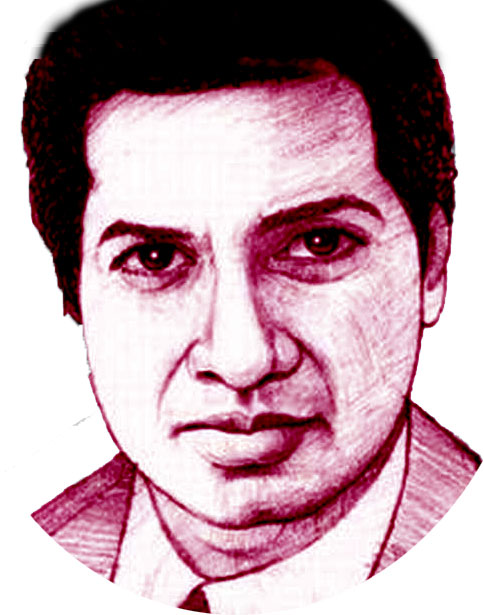Ramanujan’s Mathematical Formulas: How They Changed the World
Srinivasa Ramanujan was an Indian mathematician who lived during the British Rule in India. In spite of the fact that he had practically no proper preparing in unadulterated science, he made generous commitments to scientific examination, number hypothesis, unending arrangement, and proceeded with parts, including answers for numerical issues at that point thought about unsolvable.
Srinivasa Ramanujan Biography

Ramanujan at first built up his own numerical research in confinement: “He attempted to show the main expert mathematicians his work, yet bombed generally. What he needed to show them was excessively novel, excessively new, and furthermore introduced in uncommon ways; they couldn’t be irritated”.
Looking for mathematicians who could all the more likely comprehend his work, in 1913 he started a postal organization with the English mathematician G. H. Strong at the University of Cambridge, England. Perceiving Ramanujan’s work as unprecedented, Hardy masterminded him to make a trip to Cambridge.
In his notes, Ramanujan had created notable new hypotheses, including some that Hardy said had “crushed him and his associates totally”, notwithstanding rediscovering as of late demonstrated however exceptionally propelled outcomes.
During his short life, Ramanujan freely accumulated about 3,900 outcomes . Many were totally novel; his unique and profoundly capricious outcomes, for example, the Ramanujan prime, the Ramanujan theta work, segment formulae and fake theta capacities, have opened whole new regions of work and enlivened a tremendous measure of further research.
Srinivasa Ramanujan
About the entirety of his cases have now been demonstrated right. The Ramanujan Journal, a logical diary, was set up to distribute work in every aspect of arithmetic impacted by Ramanujan, and his note pads—containing synopses of his distributed and unpublished outcomes—have been dissected and read for a considerable length of time since his passing as a wellspring of new scientific thoughts.
As late as 2011 and again in 2012, analysts kept on finding that unimportant remarks in his compositions about “straightforward properties” and “comparable yields” for specific discoveries were themselves significant and unobtrusive number hypothesis results that stayed unsuspected until almost a century after his passing.
He got perhaps the most youthful individual of the Royal Society and just the second Indian part, and the primary Indian to be chosen a Fellow of Trinity College, Cambridge.
Of his unique letters, Hardy expressed that a solitary look was sufficient to show they could just have been composed by a mathematician of the most noteworthy bore, contrasting Ramanujan with scientific masters, for example, Euler and Jacobi.
In 1919, sick wellbeing—presently accepted to have been hepatic amoebiasis — constrained Ramanujan’s arrival to India, where he kicked the bucket in 1920 at 32 years old.
His last letters to Hardy, written in January 1920, show that he was all the while proceeding to deliver new scientific thoughts and hypotheses. His “lost note pad”, containing disclosures from the most recent year of his life, caused incredible energy among mathematicians when it was rediscovered in 1976.
A profoundly strict Hindu, Ramanujan attributed his considerable scientific abilities to holiness, and said the numerical information he showed was uncovered to him by his family goddess. “A condition for me has no importance,” he once stated, “except if it communicates an idea of God.”
Ramanujan was born on 22 December 1887 into a Tamil Brahmin Iyengar family in Erode, Madras Presidency, at the living arrangement of his maternal grandparents. His mom, Komalatammal, was a housewife and sang at a neighborhood sanctuary. They lived in a little customary home on Sarangapani Sannidhi Street in the town of Kumbakonam. The family home is presently a historical center.
When Ramanujan was eighteen months old, his mom brought forth a child, Sadagopan, who kicked the bucket under a quarter of a year later.
In December 1889 Ramanujan contracted smallpox, however, recouped, not at all like the 4,000 other people who kicked the bucket in a terrible year in the Thanjavur area around this time.
He moved with his mom to her folks’ home in Kanchipuram, close to Madras. His mom brought forth two additional youngsters, in 1891 and 1894, both of whom kicked the bucket before their first birthday events. He aced this by the age of 13 while finding complex hypotheses all alone.
By 14 he got merit authentications and scholarly honors that proceeded all through his school profession, and he helped the school in the coordinations of doling out its 1,200 understudies to its around 35 instructors.
Ramanujan allegedly contemplated the substance of the book in detail. The following year Ramanujan freely created and researched the Bernoulli numbers and determined the Euler–Mascheroni steady up to 15 decimal spots. for about a month.
Ramanujan bombed his Fellow of Arts test in December 1906 and again a year later.
Without a FA degree, he left school and kept on pursuing free research in arithmetic, living in outrageous destitution and regularly on the precarious edge of starvation.





